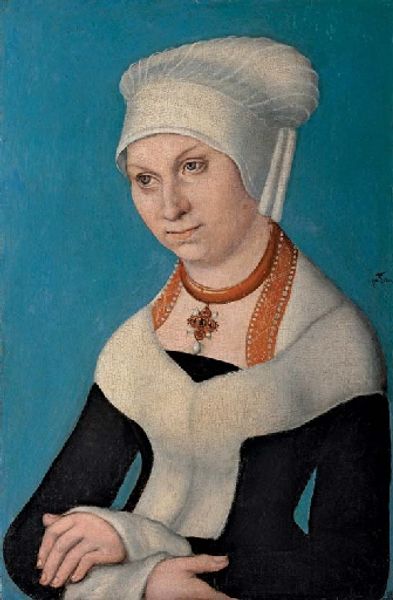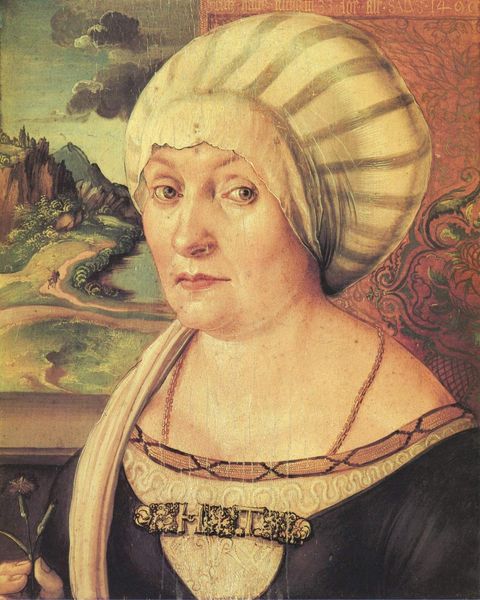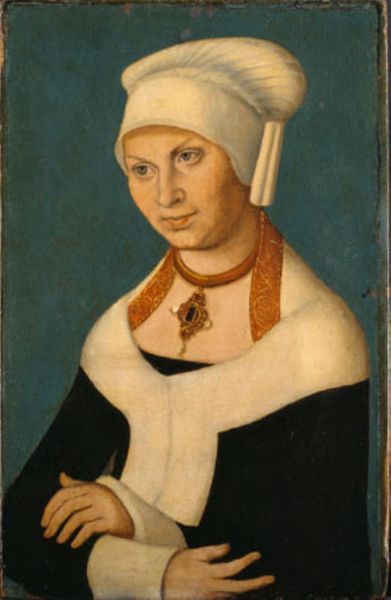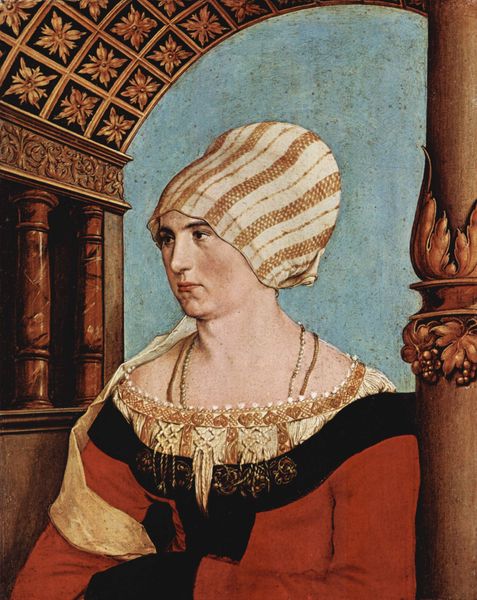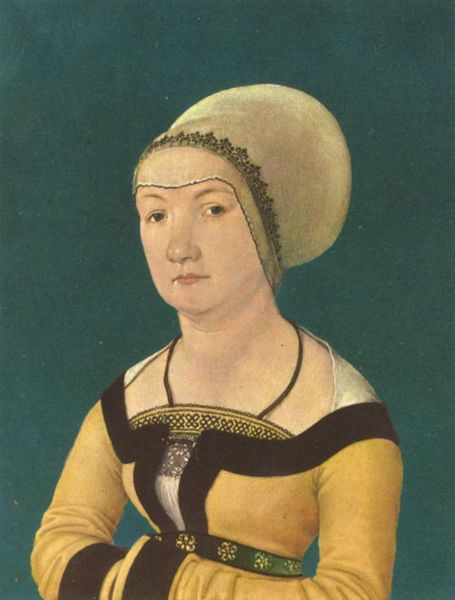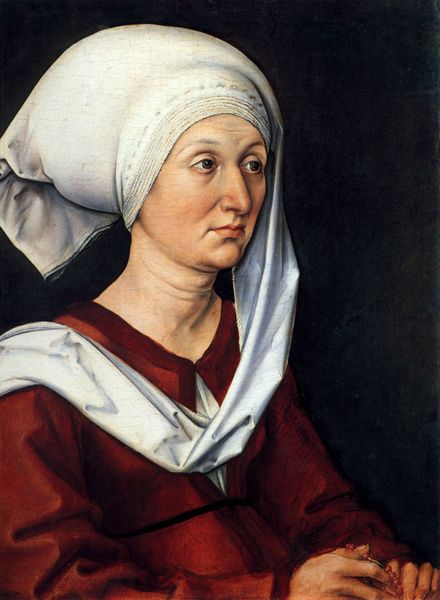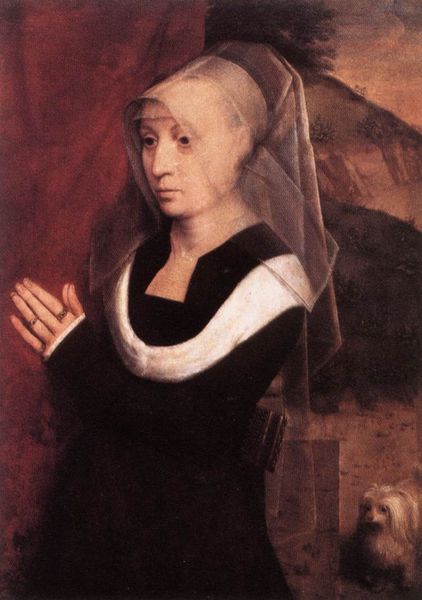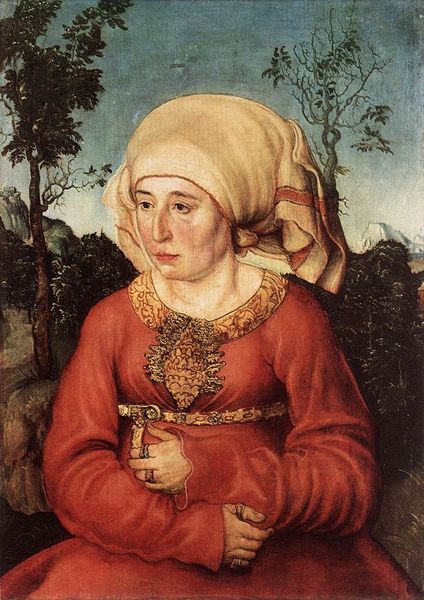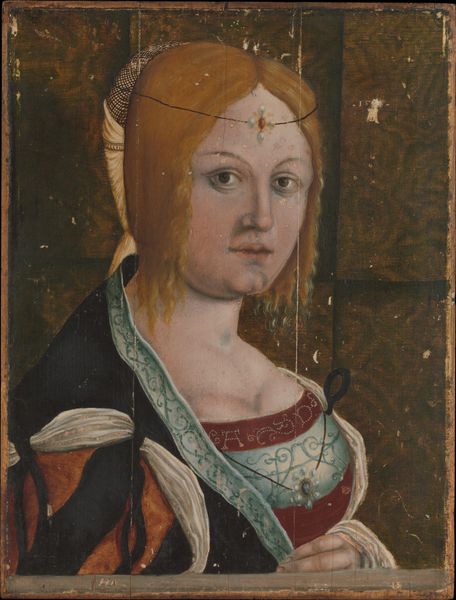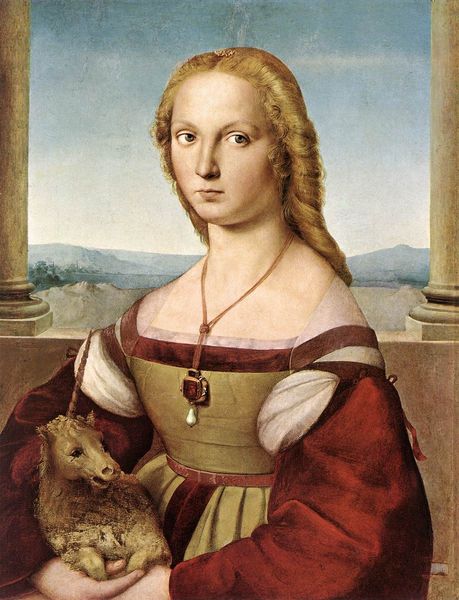
tempera, painting, oil-paint
#
portrait
#
tempera
#
painting
#
oil-paint
#
oil painting
#
northern-renaissance
#
italian-renaissance
#
realism
Copyright: Public domain
Editor: So here we have Albrecht Durer’s “Portrait of Elsbeth Tucher,” painted in 1499 with tempera and oil paint. It strikes me as a study in contrasts – Elsbeth herself, depicted with a strong realism, juxtaposed against that almost dreamlike background. How do you interpret this work, particularly considering the details in her clothing and the setting? Curator: I see this portrait as a powerful statement about the sitter's position within the patriarchal structures of 15th-century Nuremberg. The meticulously rendered details of Elsbeth’s attire – the headdress, the jewelry – signal wealth and status, but also confinement. The backdrop, divided between the natural landscape and the patterned textile, suggests the limited spheres of influence available to women of her class. Notice how her gaze avoids direct engagement. What do you think that averted gaze suggests about female agency during the Renaissance? Editor: It's like she’s caught between worlds – the public world represented by her finery and the more private world suggested by her averted gaze and that interesting background. Curator: Exactly! And that division isn’t just aesthetic. The material wealth displayed would have been inextricably linked to the economic and political power held by her male relatives – her father and later, her husband. The painting serves as a visual record of a woman’s identity shaped, in part, by forces outside of her control. We should also note that Renaissance portraiture served a propagandistic purpose. Can you think of whose "voice" we may not be hearing? Editor: I see what you mean. Thinking about it that way gives the portrait so much more depth than I initially appreciated. Thanks! Curator: And thank you. By situating Elsbeth's image within these socioeconomic power dynamics, we start to question not only the artist’s intention but also the limitations placed on his female subjects. Food for thought!
Comments
No comments
Be the first to comment and join the conversation on the ultimate creative platform.
